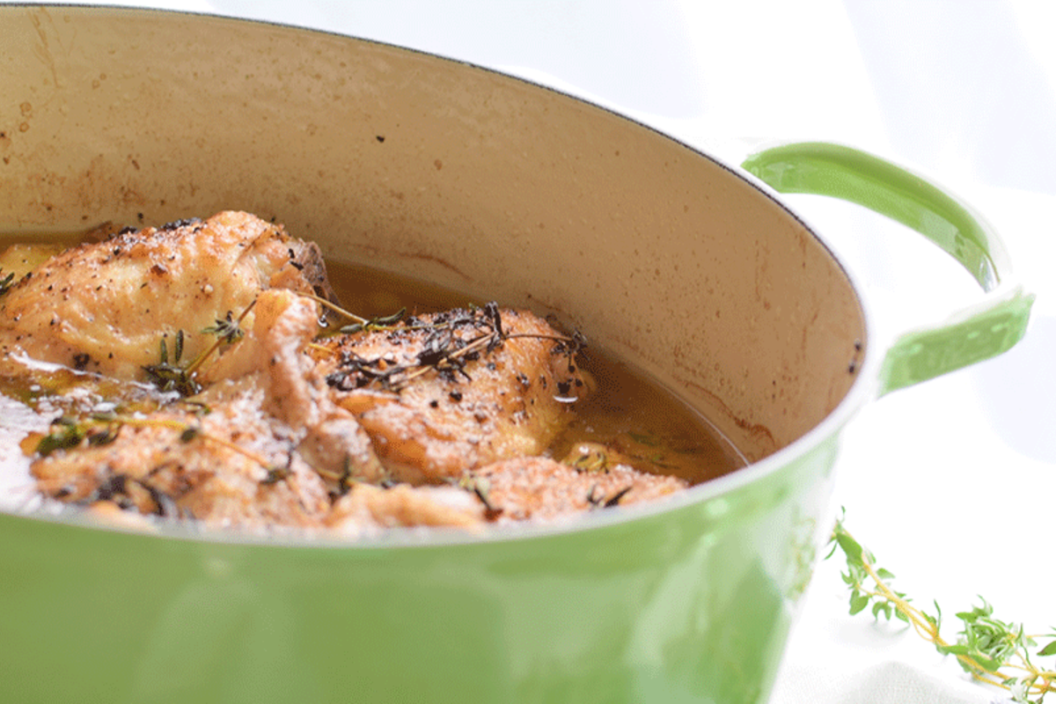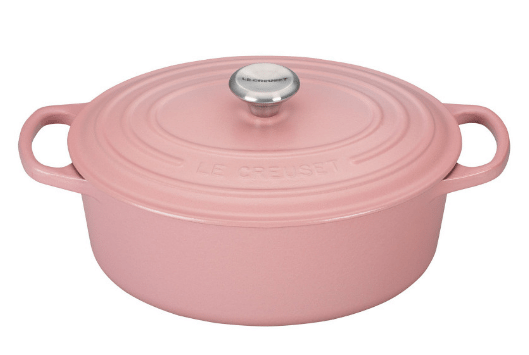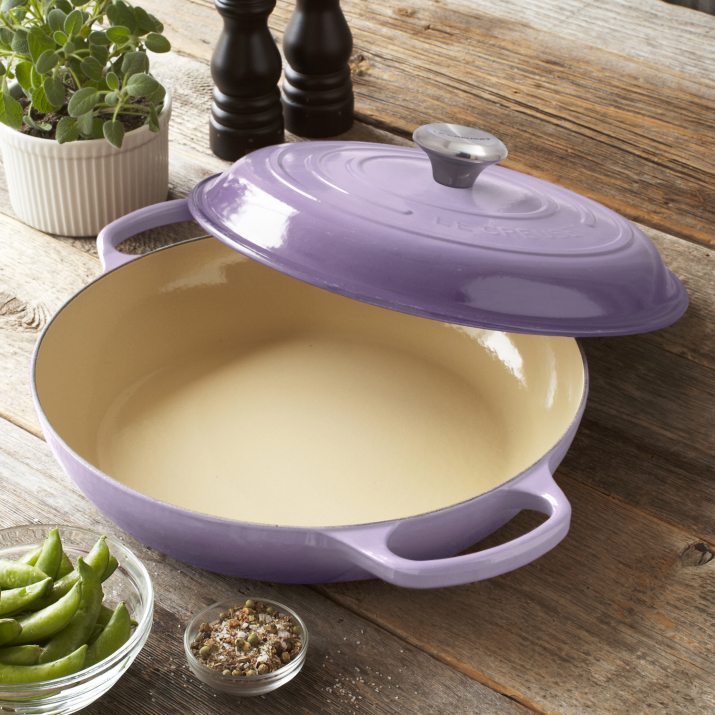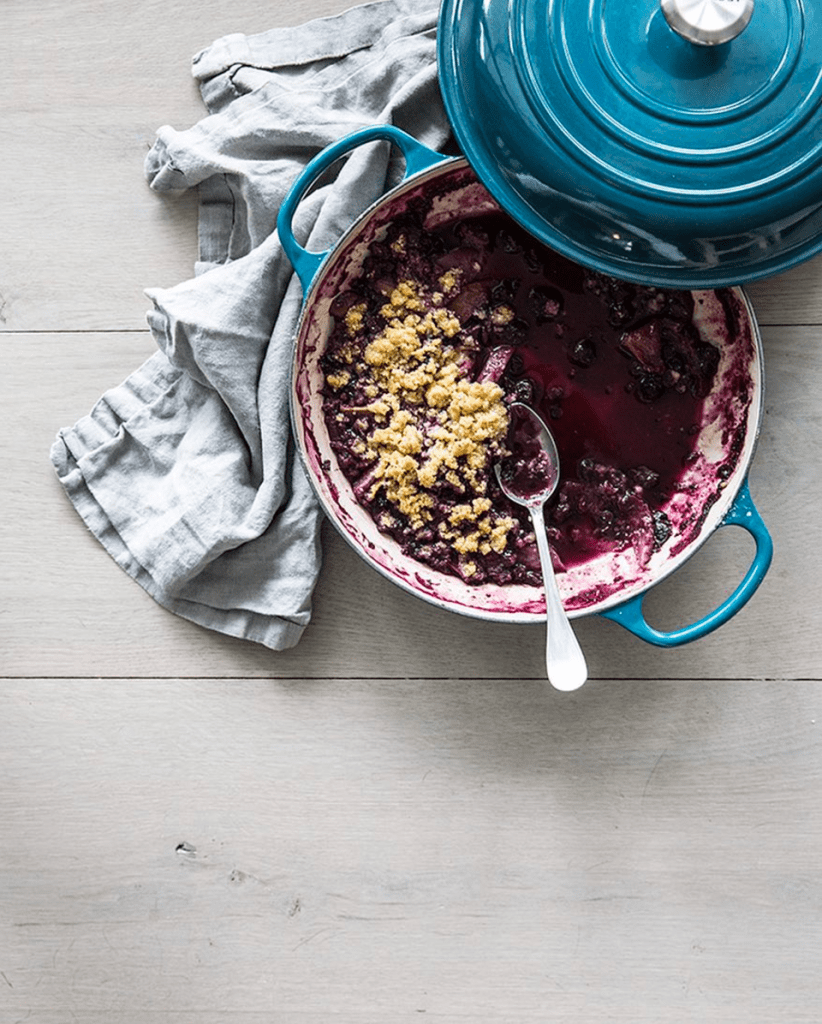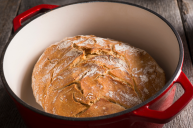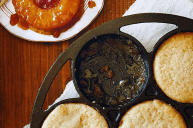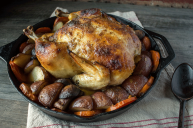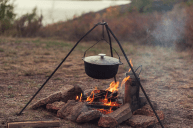It seems that once the temperature drops all I crave are soups, stews and hearty meals prepared in my trusty cast iron enameled dutch oven. It's hard to argue. Nothing sounds better on a blustery windy day than a piping hot bowl of potato soup. It's the essence of winter comfort food.
But with all that cooking, stewing, sautéing and roasting, my dutch oven tends to get down-right grimy. And as much as I try to clean it, there always seems to be that stained reminder of stews not that long ago. Thankfully there are numerous ways to clean a dutch oven and make it look good as new.
1. Clean the outside first.
First things first, you have to focus on the outside. While it doesn't really affect the food if the outside of your pan looks a little worn in, it does make the pan look pretty if you plan on using the dutch oven as a serving dish.
To combat those pesky spills of tomato sauce and caramel, make a paste of baking soda and warm water and scrub the outside with a scotch-brite pad. While it may be tempting to use your steel wool, it's too abrasive for the enamel and will leave ugly scratches
2. The power isn't in the scrub.
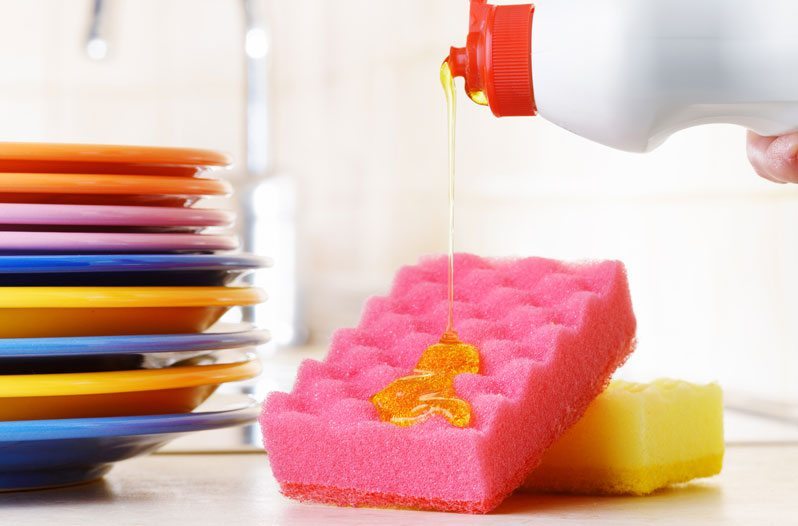
All those days working your arms at the gym aren't going to come in handy here. Dutch ovens are basically a giant nonstick pans which means that food is pretty easy to get off. Unless you are like me, and forgot about a caramel boiling and it turned into literal charcoal-but that's another story.
Rather than using an abrasive sponge or scrubber until your arm goes numb, bring in reinforcements like baking soda, dish soap and a bit of bar keeper's friend. The cleaning products work much better than a heavy-handed scrub.
3. Heat is your savior.
Did you know that you can pretty much boil off most food bits and grime from your cast iron dutch oven? Yes, it's totally true!
After making that big pot of venison stew, pour in some water and place the dutch oven back on the stove. Crank the heat to high and let that baby boil for a good ten minutes or so. The boiling water will totally break down any stubborn pieces of dried-on food. Remove the pot from the heat and let it cool enough to handle. Then pour the water out and wipe with a sponge or a paper towel.
4. Dry, dry, dry.
To ensure that your enameled cast iron dutch oven avoids rusting, run a paper towel or kitchen towel in and around your pot before putting it away. Sometimes in a haste of putting the dishes away I tend to stack the pots up while there might be a bit of water still on them. This is a big, no-no! The water will rust and eat away at your enamel dutch oven, making it ugly and unusable.
To counter this, always let your dishes fully air dry before placing them in a cupboard. Better yet, store them upside down on a rack to make sure there's no water at the bottom of the pot.
5. Baking soda, your new best friend.
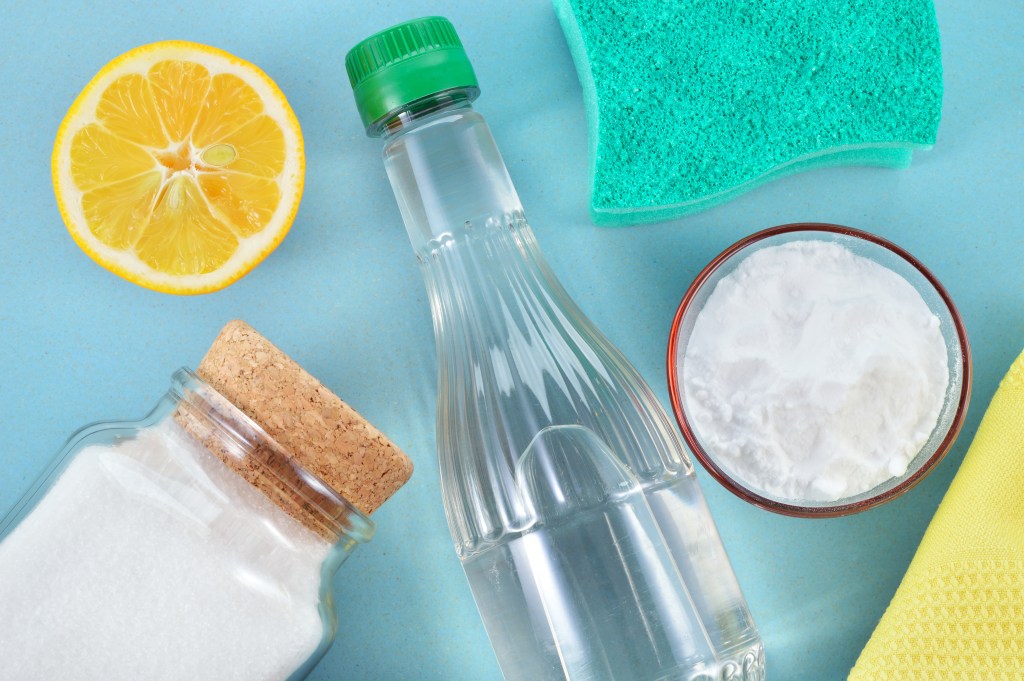
Perhaps those caramelized onions stayed on the stove too long. Have no fear and reach into your pantry for baking soda. You can either add a few spoonfuls of the powder to your boiling hot water to help it break down burnt-on food residue or if you have really stubborn stains, make a paste using baking soda and water as your cleaning method.
Apply the thick paste to the spots which need the most help, cover the dutch oven, and let sit overnight. The next morning wash the dutch oven with mild soapy water.
6. Wood is the way to go.
To prevent unwanted scratches and buffs, we highly recommend using wooden or silicone kitchenware while making anything in a dutch oven. Metal tools like spatulas or tongs tend to scratch away at the protective enamel which can then fall into your food.
And when it comes to cleaning, it's better to use something like a wooden spoon to break up any big pieces of baked on food.
7. Relive chemistry class.
It's time to travel back in time to chemistry class and make a reaction. On a recent post on Food52, one reader suggests, "Add about 1/2 inch of hydrogen peroxide to the pot. Add 1 to 2 teaspoons of baking soda. Heat until it starts to bubble up. It needs the heat to start the reaction. Simmer for about ten minutes and brush with a scrub brush. Repeat as needed."
The chemical reaction rings true and provides you with a squeaky clean pot. Just wash normally and rinse before using.
8. Use the lifetime warranty.
Okay, so you've really messed up. Like to the point that your prized dutch oven is no longer usable in any situation. First, I'd call my mom to cry. But then you need to call in the big guys-the lifetime warranty. Le Creuset offers a limited lifetime warranty on all of their cast iron products, making it easy to get a replacement if anything should happen.
Before filing a claim make sure to check out the website and double check to see if your claim falls under the warranty.
9. If all else fails, learn to love.
If it seems like nothing at all will get rid of that stubborn stain, it's time to accept it and love it for what it is. A little staining or scratches add character to your dutch oven and show how much you cook with it. So be proud and show off those stains.
To keep your cast iron cookware up to their best, always season your dutch oven after cleaning with a touch of vegetable oil. start by swirling a small amount oil in the pan and then placing it upside down in a preheated 425ºF oven. Let the pan sit in the oven for about an hour, then repeat with two more layers of oil.
Originally published February 16, 2018
